
Want to learn more? Take a look at the North American Guide to Woodpeckers
All of these different species have been known to be frequent garden visitors in the state of Tennessee.
Tennessee has a unique topography meaning that there are different climates in different geographical locations across the state, but most of the state has a temperate climate.
This means that they have cold winters and warm summers. There are 56 different state parks across Tennessee and there are 12 different national parks in the state.
After talking about Tennessee and what woodpeckers can be found there, let’s have a look at the individual species in more detail.
Take a look at our article on How to Attract Woodpeckers?
What Woodpeckers can be seen in Tennessee?
Table of Contents
1. Red-bellied Woodpecker
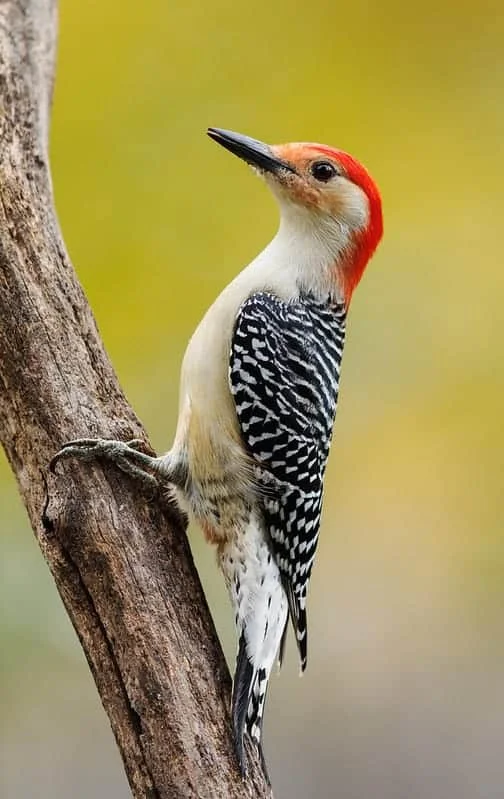
Wingspan
15-18 inches
Weight
2.65 ounces
Life Expectancy
12 years
Diet
Insects
These woodpeckers have pale red bellies and much brighter red feathers on their crown of their heads. Black and white feathers form striping patterns down this woodpecker’s back.
You can find these birds in woodland areas and sometimes in wooded suburb areas. Males will pick a site for the nest and begin to excavate it early on in the breeding season, their nests are usually in dead trees and trunks.
To initiate courtship, males will tap on their tree trunks to attract a female and if the female is interested, she will tap back to the male. They will make their nests in the same tree year after year but will often use a different cavity, they lay about 2-6 eggs per brood.
These birds are permanent residents in Tennessee and will stay in the state year-round. They are most active during their breeding seasons and they can be seen all across the state.
They are very abundant in Tennessee and most recorded sightings have been to the south of the state.
2. Downy Woodpecker
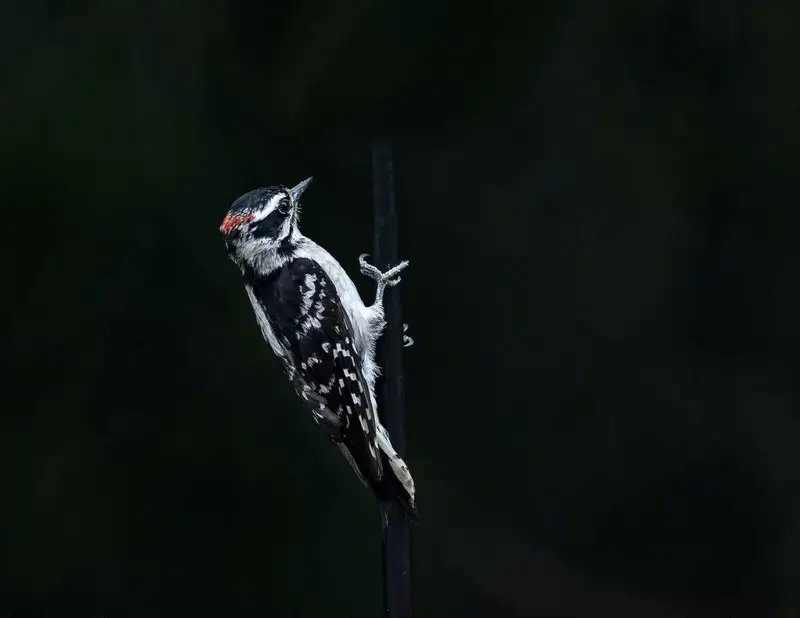
Wingspan
3.27 to 4.13 inches
Weight
0.75 to 1 ounce
Life Expectancy
12 Years
Diet
Insects & Non-insect arthropods
You can identify this woodpecker tiny patch of red on the back of their heads and their pales bellies and dark wings and backs. You will usually find this woodpecker in open woodland areas, commonly ones next to rivers and streams and they are very small in size for a woodpecker.
The spring months signal the beginning of the breeding season and males will try to attract females by flying between trees and fluttering their wings to look almost like a butterfly.
The breeding pairs nest together and will nest in either fully dead trees or in the dead parts of living trees.
The Downy woodpecker is a year-round resident in Tennessee and they often stay permanently in the state. They can be seen all across Tennessee, but they are most active in the spring months during courtship. Most of the recorded sightings for this woodpecker have been to the south west of the state.
3. Hairy Woodpecker
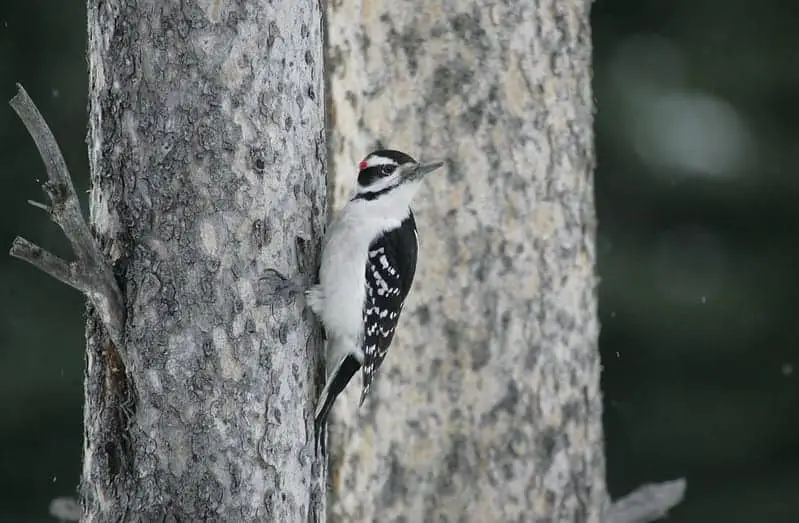
Wingspan
15 inches
Weight
1.4 to 3.4 ounces
Life Expectancy
15 years
Diet
Wood-boring insects & tree sap
These woodpeckers are an average size for a woodpecker and are most uniquely identified by the orangey red patch of feathers on top of their head. They also have pale bellies and dark wings and backs.
These birds will make their nests in cavities of dead trees, often hollowing out a new one each year. They like to nest in woodland areas and their broods consist of 3-6 eggs, they only have one brood per year.
These woodpeckers have a conflict display that males will do to other males of the species. They raise their wings over their back and make a shrill cry to warn to other individual that conflict may ensue.
They also have a unique courtship display for the females, but this and their other breeding behaviours have not been well studied.
The Hairy Woodpecker can be found throughout the whole state of Tennessee and they are year-round residents.
They are quite an abundant species of woodpecker, having a large range across the united states, and the highest number of recorded sightings in Tennessee has been to the south west of the state.
4. Pileated Woodpecker
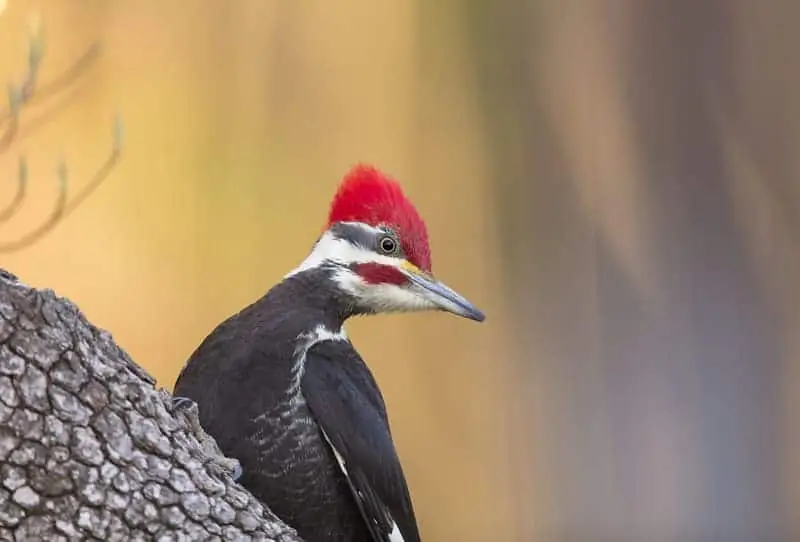
Wingspan
26 to 30 inches
Weight
8.8 to 14.1 ounces
Life Expectancy
13 years
Diet
Fruit, nuts & insects
Both the belly and the wings and back of this woodpecker are covered in black feathers. They can be identified by their bright white neck and the prominent display of red feather on top of their heads.
These birds make their nests in coniferous woodlands, the more mature the woodland the better, and they are large for a woodpecker. Their cavities in trees rectangular, which is not common for woodpeckers, and they make these in dead trees or trunks.
These birds remain monogamous and often breed for life, they only allow another individual into their territory when their mate dies. This means that there are a lot of Pileated Woodpeckers that do not have their own territory.
These birds are year-round residents in Tennessee and have a range that encompasses the whole state. They are most active during their breeding season and most of the recorded sightings have been to the west of the state.
5. Yellow-bellied Sapsucker
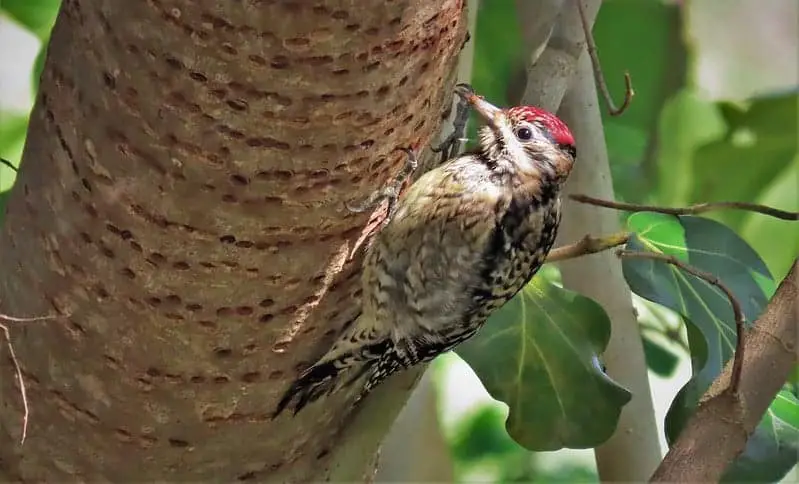
Wingspan
13 to 16 inches
Weight
1.5 to 1.9 ounces
Life Expectancy
7 years
Diet
Tree sap, insects & fruit
Yellow Bellied-Sapsuckers are identifiable by their bold black and white feather patterns with red crowns, they have pale yellow feathers on their bellies which is where they get their names.
These birds are small in size for woodpeckers and have a stout bull. Throughout the year, you will find these birds nesting in different forests depending on the seasons.
The Yellow-bellied Sapsucker has both courting displays and aggressive displays that these birds will do to other members of the same sex. The courting and aggressive displays are very similar to one another.
These birds will form long term breeding pairs, although a few will find different mates every year. They remain monogamous throughout the breeding season.
Yellow-bellied sapsuckers can be found throughout the whole state of Tennessee, though they are not permanent residents.
They are only present in the state outside of their breeding seasons, often in winter, and the most recorded sightings seem to be to the west of the state.
6. Northern Flicker
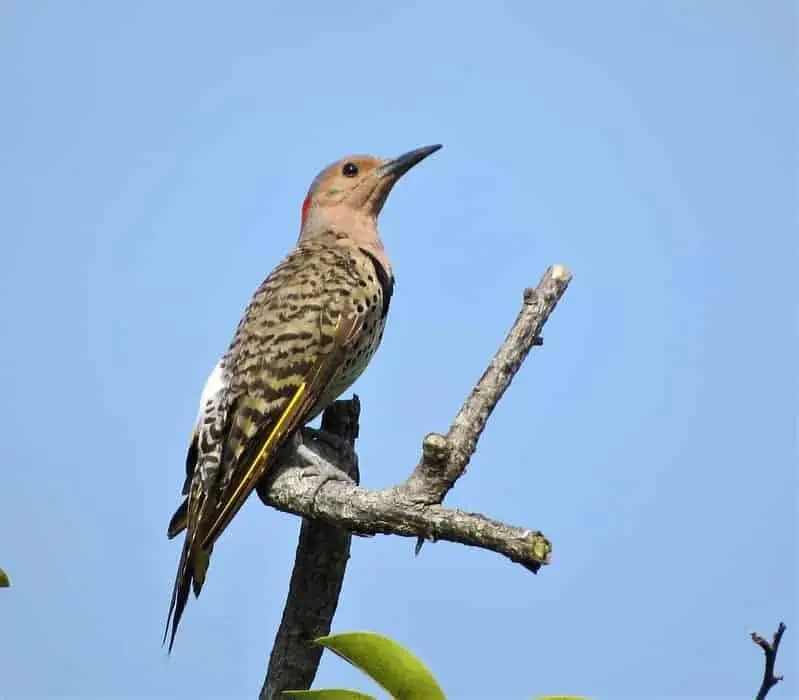
Wingspan
21.3 inches
Weight
6 ounces
Life Expectancy
9 Years
Diet
Insects, seeds, nuts & fruit
These brown feathered woodpeckers are very large in comparison to other woodpecker species and they can be identified by their spotted bellies and the patches of red on their face and their tail.
These birds will sometimes nest in city parks and suburbs but prefer to mostly stay in more dense wooded areas. These birds spend most of their time foraging for food on the ground which is not common for woodpeckers.
Two males will sometimes compete in what is called a ‘fencing duel’ in the presence of a female in an attempt to get her to mate with them. They will do this display whilst emitting a call that sounds like wicka.
These birds will reuse the cavities that they have excavated in previous years, although it is not known whether they return to the same mate every year.
The Northern Flicker has a large range that goes across most of the United states and they can be seen throughout all of Tennessee.
They can be seen there year-round but are less common during the breeding season when they move north to mate. The highest number of recorded sightings of this bird have been in the south west of the state.
7. Red-headed Woodpecker
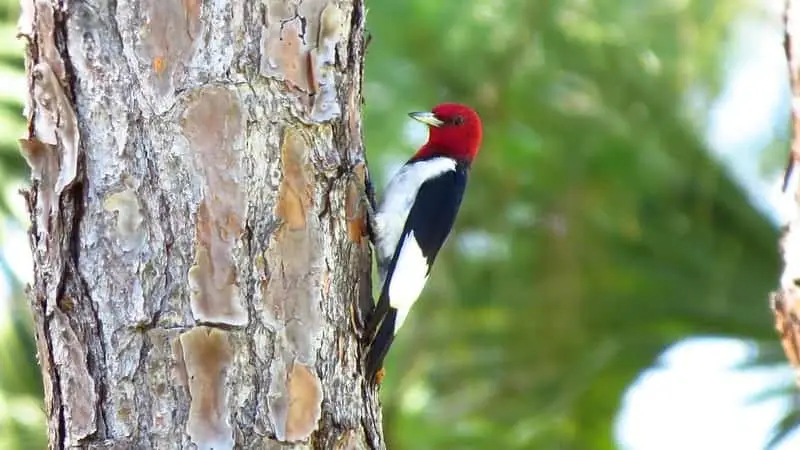
Wingspan
16 inches
Weight
2.5 ounces
Life Expectancy
9 Years
Diet
Insects & Berries
The Red-Headed Woodpecker gets its name from its bright red head, which is also its most easily identifiable feature. A combination of white and grey feathers covers the rest of this bird’s body.
These birds are most commonly found in open areas of woodlands and are medium sized for a woodpecker. Breeding pairs will play a game of hide and seek with one another around tree stumps at the beginning of the breeding season when they are first courting.
Most of these pairs will stay together for several years after mating but they do not interact with each other outside of the breeding season. As they are prey to a lot of different species including raccoons and Peregrine falcons, both individuals from the breeding pair will help to defend the nest and they are very territorial, even outside of the breeding season.
These birds are in the state of Tennessee for usually, most of the year. They are most abundant during the breeding season and in the winter, though some will go further south in the cold months.
They can be seen all across the state and most sightings have been to the east of the state.

More Articles.

Best Camera For Bird Watching 2020
Article Summary: Best Budget Camera: Nikon D500 DX-Format Digital SLR Best Mid-tier Camera: Canon EOS

How To Attract Birds Of Prey To Your Yard?
The best way to attract birds of prey into your yard is by creating a

If you’re thinking about taking your child birdwatching, the most important thing is having equipment

About Us
We are avid bird-watchers who recently retired, allowing us more time to travel the world. Fortunately, we have managed to visit numerous countries around Europe, Asia, and America. Watching and photographing birds has been a passion for many years and we are making the most of the extra time on our hands!
